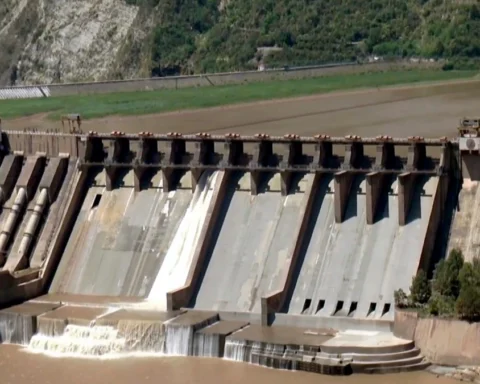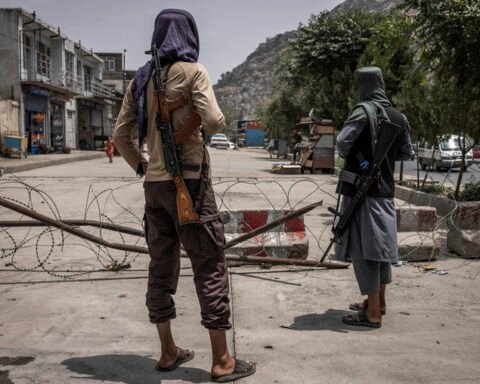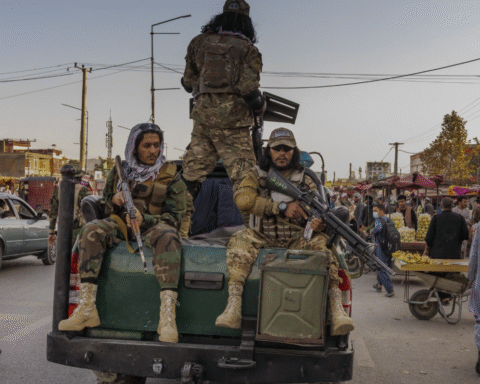The Pakistan US investment relations are at its crossroad. Even with over four decades of diplomatic relations, investment in economic ties especially investments have not achieved its potential. Strategically located as a crossroads country between South Asian, the Middle East and Central Asia, Pakistan is leading a revised economic agenda of opening to become more open and investing friendly. To the United States, Pakistan is full of untapped opportunities in the high value areas that include minerals, energy, information technology, and agriculture. These are the prospects that represent the greater interests of America to diversify its global supply chains and diversify geopolitical risks, and Pakistan can be a potential partner in a new global context of trade and investment.
In a world that is being driven by the great power rivalry and characterised by resilience of supply chains, the economic engagement has become more than merely the means of financial gain, it has become the way of power, protection of national security and a cornerstone of regional stability.
Critical Minerals
Under their soil is one of the greatest assets of Pakistan which is going to waste. The value of Pakistan national mineral wealth is estimated between 6 trillion and 8 trillion with high reserves of copper, lithium, and rare earth elements. These are strategic resources vital to the clean energy technologies and new industries, and thus worth their weight in gold in future development. To cite but a few examples, Lithium, and Antimony, are now mandatory components of battery storage, electric vehicles, and advanced electronics, three of the sectors in which US dependence on adversarial or unstable suppliers is already affecting national security.
Reko Diq project in Balochistan, which will create wealth worth 74 billion through the mining sector in a period of 37 years, is the kind of mineral extraction which highlights the transformational power of the sector. Already, the US Export Import Bank is considering supporting the project up to a 1 billion dollar financing package, a sign that the US institutions are becoming aware of the magnitude of the prospect. Nonetheless, unless the appropriate policies are supported on a regular basis, these isolated instances can become the exception and not the rule.
The International Trade Administration (ITA) cites that 83 US firms at present exist in Pakistan with over 3 billion dollars being earned by them in a year. Nevertheless, the US Foreign Direct Investment (FDI) inflow is modest, and it does not exceed 300 million a year. This is quite erratic going by the size of opportunity as well as the presence of the US firms on the ground.
During the FY2021,22, US direct investment increased over 50 per cent, which is an indication of renewed interest, yet the rate was unstable. However, in 2022 inflows have dramatically decreased to 127 million dollars, showing the impact of the external factors of the economy and lasting doubts of investors related to the issues of regulative uncertainty, political instability and protection of rights.
Policy Shifts and the SIFC Game Changer
The formation of Special Investment Facilitation Council (SIFC) ensured a landmark effort of Pakistan becomes investment friendly. This civil military platform is set to expedite clearances, reduce red tape and bureaucracy and a one stop shop to high priorities sectors. It has also removed the foreign shareholding limits, simplified the visas given to business travellers and licensing processes which is especially advantageous to US firms in IT, Agri tech, renewables and mining industries.
The SIFC also indicates to international investors that the senior leadership of Pakistan is in coordination on economic recovery to national security. When used proficiently, it might assist in keeping investor confidence in check as well as release more amounts of US capital.
In the case of the US, the energy sector, and renewables in Pakistan can be mutually beneficial not only in terms of a commercial activity but strategic prospectivity in accordance with climate objectives. Solar, wind, and hydropower potential are still routinely underutilised in the country, whereas affordable clean energy demand is booming due to its low cost. The US experience in energy infrastructure, storage solutions and the modernisation of the grid may be critical.
The Pakistan market offers large potential in fintech, logistics, and health tech due to its younger and tech savvy population. Venture capitalists can encourage its growth and further analysis in the region thanks to the American venture capital market. Risking lesser investment in the Pakistani market will trigger an expansion of the larger market, as well as contribute to the integration of the Pakistani startups into the global value chain. In a similar manner, the immediate areas of concern are agriculture and Agri-tech. Likewise, the fertile Pakistani plains combined with the US precision farming technologies and the cold chain supply lines could enhance its food security and additional export opportunities.
Balancing China’s Regional Influence
Pakistan investment by US is not only about access to a market in Pakistan but also has some strategic aspect in it. The Belt and Road Initiative (BRI) of China has granted Beijing significant leverage over Pakistan in the country infrastructure, energy, and mining sectors notably the China Pakistan Economic Corridor (CPEC). As much as Pakistan enjoys its relationship with China, it is vital that the country diversify an investment base to prevent over reliance.
The growth of its economic presence will allow the US to allow Pakistan to sustain a healthy foreign policy, grow strategic autonomy and not be at the mercy of one foreign power, such as critical minerals. This has relevance especially in minerals supply chains where the US wants to minimize its dependence on the Chinese processing facilities.
A change in direction would be revamping the Bilateral Investment Treaty (BIT) between Pakistan and the US. The current framework is also obsolete and is not entirely concerned with contemporary investor aspects like governance in the digital economy, intellectual property rights, and incentives of green investments.
Simultaneously, forums such as the USPBC have a role to play by helping to maintain a high level of dialogues with business issues and investors and by the inclusion of the voice of the private sector to feed directly into policy formulation. A long-term institutional involvement can also serve to de-risk investments through enhanced dispute resolving processes and uniformity of practice in regulations.
From Profit to Geoeconomic Leverage
Nowadays, investment is not an issue of balance sheet anymore, but a strategic asset. In the case of the US, an increased economic integration with Pakistan would help strengthen the stability of the region, neutralize the influence of rival states, and gain access to important supply chains. In case of Pakistan, American funding may accelerate the process of modernisation of industries, increase export potential and create good employment opportunities to its underutilised labour force.
There is no doubt that the potential is untapped, yet goodwill alone will not be enough to achieve it. It requires a conscious approach, policy consistency to be provided by Pakistan, a long term perspective by the US and shared critiques and systems to discover, de-risk and implement high impact cooperation.
One should not lose sight of the strategic opportunities ahead due to the volatility of the US investment inflows into Pakistan in recent years. Pakistan has trillion dollar reserves of minerals, a young and innovative population, and progressive reform initiatives such as the SIFC that have begun to take place. Hence, Pakistan should have little trouble luring a significant amount of US capital into areas that both countries can potentially benefit. Pakistan should be in priority list of US as far as it is definite about developing resilient supply chains and increasing their sphere of influence in the competitive geoeconomic environment. In the case of Pakistan, this is where transparency, stability, and a clear government strategy will be vital in converting potential that lies yet unexploited in the land to the prosperity that lies in the land.
Disclaimer: The views and opinions expressed in this article are exclusively those of the author and do not reflect the official stance, policies, or perspectives of the Platform.









